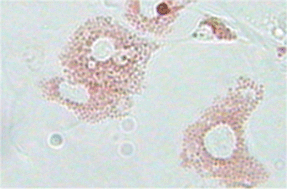Application and evaluation of the neutral red retention (NRR) assay for lysosomal stability in mussel populations along the Iberian Mediterranean coast
Abstract
The neutral red retention (NRR) assay to determine lysosomal membrane stability (

* Corresponding authors
a
Spanish Institute of Oceanography, IEO, Oceanographic Centre of Murcia, Varadero 1, San Pedro del Pinatar (Murcia), Spain
E-mail:
cmartinez@mu.ieo.es
Fax: +34 968 184 441
Tel: +34 968 18 05 00
b Plymouth Marine Laboratory, Prospect Place, The Hoe, Plymouth, UK,
The neutral red retention (NRR) assay to determine lysosomal membrane stability (

 Please wait while we load your content...
Something went wrong. Try again?
Please wait while we load your content...
Something went wrong. Try again?
C. Martínez-Gómez, J. Benedicto, J. A. Campillo and M. Moore, J. Environ. Monit., 2008, 10, 490 DOI: 10.1039/B800441M
To request permission to reproduce material from this article, please go to the Copyright Clearance Center request page.
If you are an author contributing to an RSC publication, you do not need to request permission provided correct acknowledgement is given.
If you are the author of this article, you do not need to request permission to reproduce figures and diagrams provided correct acknowledgement is given. If you want to reproduce the whole article in a third-party publication (excluding your thesis/dissertation for which permission is not required) please go to the Copyright Clearance Center request page.
Read more about how to correctly acknowledge RSC content.
 Fetching data from CrossRef.
Fetching data from CrossRef.
This may take some time to load.
Loading related content
